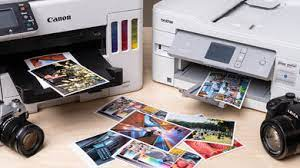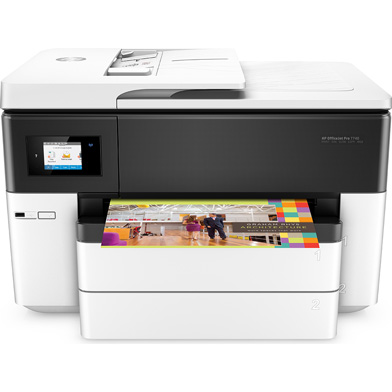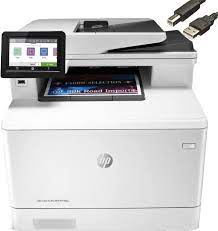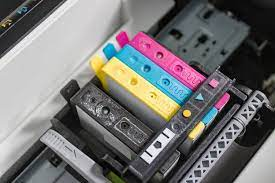n the digital age, printers small business remain an essential tool, enabling the creation of physical documents, marketing materials, and more. The right printer for small offices can enhance productivity, streamline operations, and contribute to a professional image for small businesses. In this guide, we’ll delve into the key factors to consider when selecting printers for your small business in the UK.
1. Determine Your Printing Needs
Start by understanding your business’s printing and paper capacity requirements. Consider the types of documents you need to print, the volume of paper capacity for printing, and any special features like color printing or double-sided printing.
2. Printer Types
There are various printer types available:
- Inkjet Printers: Ideal for small businesses with moderate printing needs. They are versatile and produce high-quality color prints.
- Laser Printers: More suitable for businesses with higher printing volumes. They offer fast and cost-effective printing, particularly for text-heavy documents.
- All-in-One Printers: These multifunction devices combine printing, scanning, copying, and sometimes faxing in a single machine, offering convenience and space-saving benefits.
3. Printing Speed and Volume
Consider the number of pages you’ll be printing daily or monthly. Laser printers for small amounts are generally faster and more efficient for high-volume printing, while inkjet printers for small amounts are suitable for lower volumes.
4. Print Quality
The quality of your printed materials reflects on your own business printer’s professionalism output quality. Look for a printer with a high resolution (measured in dpi) for crisp and clear prints, especially if you’re printing graphics or marketing materials.
5. Connectivity Options
Ensure the printer offers connectivity options that align with your business needs. USB, Wi-Fi, Ethernet, and mobile printing capabilities can provide the flexibility required for small business printers, to accommodate various devices and locations.
6. Cost Considerations
- Initial Cost: Consider your budget when purchasing a printer. While inkjet printers are generally cheaper upfront, laser printers might have a higher initial cost.
- Running Costs: Evaluate the cost of replacement ink or toner cartridges. Some printers offer cost-saving features like high-yield cartridges.
7. Paper Handling and Size
Consider the types of marketing material and sizes of paper your business uses. If you need to print on different paper sizes or print volume of materials, ensure the printer’s paper handling capabilities meet your requirements.
8. Additional Features
- Duplex Printing: Double-sided printing can save paper and reduce costs.
- Scanning and Copying: If you require scanning and copying capabilities, consider an all-in-one printer.
- Wireless Printing: Wi-Fi-enabled printers allow for wireless printing from laptops, tablets, and smartphones.
9. Brand and Warranty
Opt for reputable brands that offer good customer support and warranties. Warranties can provide peace of mind and assistance in case of technical issues.
10. Energy Efficiency
Select printers with energy-saving features, such as automatic sleep mode and Energy Star certification, to reduce electricity consumption and operational costs.
What is an Inkjet Printer?
An all business printer or inkjet laser printer, is a type of printer that recreates digital images by propelling droplets of ink onto paper and plastic substrates. The ink ejected from the nozzles forms patterns on the paper, producing the final image.
What are Laser Printers?
A laser printer is a type of printer that uses a laser beam to produce images on paper. Instead of using ink like its counterpart, the inkjet printer, a laser printer or inkjet printer only uses toner, which is a fine powder.
What is Mobile Printing?
Mobile printing represents a significant step forward in merging the convenience of mobile devices with the practicality of hard-copy outputs. As technology continues to evolve, it’s expected that mobile connectivity and printing options will become even more seamless and integrated into our daily lives. By understanding its benefits and being aware of potential challenges, users can harness this technology to its fullest, reaping the benefits of on-the-go printing without the traditional constraints.
Types of Small Business Printers
- Inkjet Printers: Known for their versatility, inkjet printers are suitable for businesses that require color prints, especially for photographs or marketing materials.
- Laser Printers: Perfect for high-volume printing needs, laser printers offer crisp text output and faster print speeds, ideal for document-heavy businesses.
- Multifunction Printers (MFPs): These are all-in-one devices that can print, scan, copy, and even fax. MFPs are great space savers and can be cost-effective compared to buying separate devices.
- Dedicated Photo Printers: For businesses in the creative industry, dedicated photo printers provide high-quality photo prints, ensuring professional results.
- Label Printers: Ideal for businesses that require barcode, shipping, or product label printing.
Key Considerations When Choosing a Printer
- Volume: Estimate the number of pages you’ll print monthly. If it’s high, a laser printer might be more economical.
- Functionality: Decide if you only need to print or if scanning, copying, and faxing are also necessary.
- Print Quality: Businesses needing high-resolution images should invest in printers with higher DPI (dots per inch) ratings.
- Connectivity: Look for options like Wi-Fi, Ethernet, and mobile printing capabilities, especially if multiple devices need printer access.
- Cost of Ownership: Consider not only the upfront cost but also long-term expenses like ink, toner, and maintenance.
- Speed: If your business operations require rapid printing, check the printer’s pages per minute (PPM) rating.
- Footprint: Space might be a premium in some offices. Ensure the printer size suits your workspace.
- Expandability: Some printers allow additional paper trays or memory upgrades, beneficial as your business grows.
Ink Cartridges
Ink cartridges are replaceable containers that hold ink used for printing on paper. They come in various types, including original (OEM) cartridges from the printer manufacturer and third-party compatible cartridges. Selecting the right ink cartridges and best printers for small printer can significantly affect the quality of your prints, as well as your printing costs and environmental impact.
1. Compatibility
Ensure that the ink cartridges you choose are compatible with your printer model. Using an inkjet printer with incompatible cartridges can lead to poor print quality, printer errors, and even damage to your printer.
2. Original vs. Compatible Cartridges
- Original Cartridges (OEM): These are cartridges produced by the printer manufacturer. While they can be more expensive, they are designed to work seamlessly with your printer and offer consistent print quality.
- Compatible Cartridges: These are third-party cartridges that are designed to be compatible with specific printer models. They are often more cost-effective, but quality can vary among different brands.
3. Print Quality
For professional-looking prints, consider the quality of the best printer and the ink in the cartridges. Original cartridges are the best printers generally known for delivering consistent and high-quality prints. However, some reputable third-party brands also offer good quality ink cartridges.
4. Page Yield
Page yield refers to the number of pages a cartridge can produce before it needs to be replaced. Compare the page yield of different cartridges to determine which offers better value for your printing needs.
5. Cost Considerations
While original cartridges can be more expensive upfront, they might offer better value in terms of the print speed, quality and page yield. Compare the cost per page of different cartridges to make an informed decision.
6. Environmental Impact
Some third-party cartridges claim to be more environmentally friendly or offer recycling programs. Consider the environmental impact of your cartridge choice, including the disposal of used cartridges.
7. Storage and Shelf Life
If you buy cartridges in bulk, consider their shelf life. Ink cartridges can dry out over time, affecting print speed and quality. Store cartridges in a cool, dry place and use older cartridges before newer ones.
Automatic Document Feeder (ADF)
An automatic document feeder (ADF) is a mechanism integrated into printers and scanners that enables the automatic feeding of multiple pages for scanning, copying, or faxing all in one printer. This feature eliminates the need to manually place each page on the scanner bed and print it, saving time and effort.
The Power of Fast Print Speeds
Fast print speeds refer to the rate at which a printer can produce printed pages instant ink. This feature is particularly valuable for small businesses, and professionals who frequently handle large volumes of documents, presentations, marketing materials, and more.
Flatbed Scanners
A flatbed scanner is a device designed to create digital copies of physical documents, images, or objects. It consists of a flat, glass surface onto which items are placed for scanning. A moving scanning head captures the image or document, converting it into a digital file.
Conclusion
Choosing the right printer for your small business is a crucial decision that can impact efficiency, productivity, and your professional image. By evaluating your printing needs, considering printer types, examining cost factors, and exploring additional features, you can make an informed choice that aligns with your small business’ goals. A well-selected printer can contribute to a smoother workflow, effective communication, and successful small business’ operations.





Recent Comments